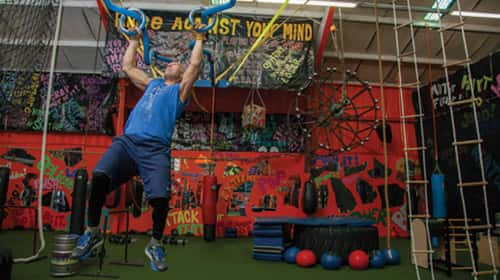In 2005, National Geographic magazine published a story entitled “The Secrets of a Long Life,” in which author Dan Buettner identified five geographic areas that are populated with the world’s longest-lived people. Coined “Blue Zones,” these areas not only have a high percentage of centenarians, but also ones that live healthy, fulfilled lives. They give new meaning to the term “Cent’ Anni,” a traditional Italian toast meaning “May you live 100 years.” In these The Blue Zones include: Okinawa, Japan; Sardinia, Italy; Nicoya, Costa Rica; Icaria, Greece; and the Seventh-day Adventists in Loma Linda, California. Individuals are not only living “Cent’ Anni,” but doing so in a happy, healthy way. While the North Bay is unfortunately not one of the Blue Zones, we can nevertheless learn from the data that was gleaned from the research into these zones and what researchers feel contributes to them living healthier and longer lives.
The cornerstones of health
Whether in a blue zone or not, most experts agree that diet and exercise are the cornerstones of optimal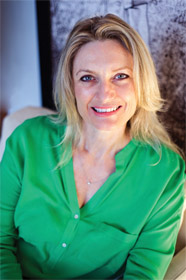 health. Furthermore, healthy habits need to become an individual’s lifestyle, not a short-term diet or exercise program to “lose weight” or “become fit,” only to return to unhealthy habits once that short-term goal is reached. This only serves to produce yo-yo weight loss and gain, lower self-confidence and motivation, and often leaves a person even unhealthier than before. Instead of short-term goals, individuals are better off adapting their lifestyle in a sustainable way that can be maintained the rest of their life. To complicate matters, new fad diets seem to emerge every few years, confusing consumers to the point that many give up trying to eat healthy at all.
health. Furthermore, healthy habits need to become an individual’s lifestyle, not a short-term diet or exercise program to “lose weight” or “become fit,” only to return to unhealthy habits once that short-term goal is reached. This only serves to produce yo-yo weight loss and gain, lower self-confidence and motivation, and often leaves a person even unhealthier than before. Instead of short-term goals, individuals are better off adapting their lifestyle in a sustainable way that can be maintained the rest of their life. To complicate matters, new fad diets seem to emerge every few years, confusing consumers to the point that many give up trying to eat healthy at all.
 health. Furthermore, healthy habits need to become an individual’s lifestyle, not a short-term diet or exercise program to “lose weight” or “become fit,” only to return to unhealthy habits once that short-term goal is reached. This only serves to produce yo-yo weight loss and gain, lower self-confidence and motivation, and often leaves a person even unhealthier than before. Instead of short-term goals, individuals are better off adapting their lifestyle in a sustainable way that can be maintained the rest of their life. To complicate matters, new fad diets seem to emerge every few years, confusing consumers to the point that many give up trying to eat healthy at all.
health. Furthermore, healthy habits need to become an individual’s lifestyle, not a short-term diet or exercise program to “lose weight” or “become fit,” only to return to unhealthy habits once that short-term goal is reached. This only serves to produce yo-yo weight loss and gain, lower self-confidence and motivation, and often leaves a person even unhealthier than before. Instead of short-term goals, individuals are better off adapting their lifestyle in a sustainable way that can be maintained the rest of their life. To complicate matters, new fad diets seem to emerge every few years, confusing consumers to the point that many give up trying to eat healthy at all. “A lot of what we do is educational,” says Cassale Sherriff, a nutritionist and exercise physiologist with Marin Weight Loss and Wellness in Novato and Greenbrae. “A lot of people don’t know how or what to eat anymore because there’s so many different dietary protocols advertised in the media. They’re offering different things, usually concentrating on just one nutrient, a quick one month plan, not a complete balanced diet, not a shift in lifestyle to lead you to long term weight loss and maintenance. Many are yo-yo dieting, losing pounds, ceasing the ‘diet’ and then putting the weight right back on again,” she says. “What needs to be worked on is your complete lifestyle—starting with nutrition and a dietary plan based on all the food groups. This allows managing weight long term.”
Eating a whole foods diet is important, says Sherriff. “So is having a well rounded lifestyle. But nutrition is the key—it’s the foundation. Eating healthy, organic fruits and vegetables, grass fed beef, organic free-range chicken. The quality of the food you eat needs to be optimum so you can receive the most benefit. Your nutrition plan needs to be based on an anti-inflammatory diet, lots of healthy omega 3 essential fatty acids from cold water fish, salmon, mackerel, sardines, halibut, nuts, seeds, whole grains, legumes and lots of fresh fruits and vegetables.”
Besides the question of what to eat, how to eat can be just as important. In today’s busy society, eating on the go has become the norm. Foods are advertised to us touting their ability to be consumed in the car. Nourishing oneself in this kind of routine diminishes a person’s capacity to be attentive to their health and make sensible decisions.
“We also weave a mindful eating program into most patients weight loss programs,” says Sherriff. “It becomes a very holistic approach, to integrate mind and body, we look at emotional reasons behind eating patterns, the wisdom of the body, tapping into people’s hunger signals, what does it feel like to be full, what does it feel like to have body satiety and taste satiety. When people are eating unconsciously, they’re not listening to their bodies and what they need. That’s often why people become overweight, by over riding the bodies natural feedback systems.”
Sherriff advises those who may have followed unhealthy habits for a long time to simply start somewhere—perhaps by trying to drink eight glasses of water every day, or making a healthy breakfast, or going for a 10-minute walk twice a week. Just starting with small steps can give your body an internal shift that makes you want to do it again. The more good choices you make, the more your body will become accustomed to them, the easier it will be to keep going. Soon you may find yourself doing things you didn’t think you could do, giving you even more self- confidence to keep going. Soon you may find yourself doing things you didn’t think you could do, giving yourself the confidence to keep going.
Keep moving
Like good nutrition, regular exercise is another fundamental factor that will keep you healthy at any age. A key to maintaining regular movement is choosing activities that you enjoy, as well as mixing up your routine. Regular exercise doesn’t necessarily mean spending hours at the gym every week. Even incorporating short increments of moving time into your day, such as taking the stairs instead of the elevator, going for a short walk after dinner, or parking further away f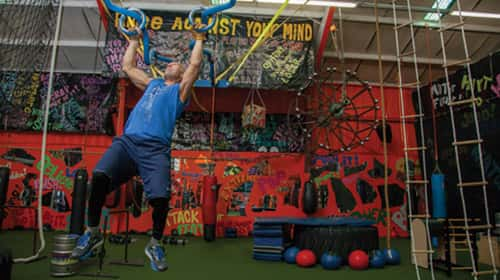 rom your destination, can reap health rewards.
rom your destination, can reap health rewards.
 rom your destination, can reap health rewards.
rom your destination, can reap health rewards. For Rich Anderson, creator of Santa Rosa-based FitWorx, a self-designed and built gym that focuses on functional fitness, being healthy isn’t related to a number on a scale or what your body looks like, but how your body can perform—in the gym as well as in the workplace and in life.
“The whole approach is functional fitness,” explains Anderson. “It makes you better in every realm—front, back, side to side, lateral, up and down, speed, agility, core, power, flexibility and endurance. It’s everything that anybody needs, whether you’re a desk jockey, golfer, professional fighter, mountain bike racer, runner or baseball player—it’s all the same. We have to learn how to be functionally sound in our body.”
To that end, Fixworx features non-traditional exercise equipment such as tractor tires, sledgehammers, and a variety of rings, ropes, punching bags and nets suspended from the ceiling, all meant to train the body in every way. When an individual (from the weekend warrior to a professional athlete) does the same repetitive movement over and over again, injuries occur and the body doesn’t perform at its peak potential. Training your body in a myriad of ways allows it to be better equipped and prepared for anything—physical or mental.
According to Anderson, this is true at any age and he views age only as a mental barrier.
“First of all, block out your age,” says Anderson. “Unless you have a health issue it doesn’t matter how old a person is. As soon as you retire, that’s a death sentence for most people. But if you keep reminding yourself how old you are then you are automatically putting limitations and roadblocks right in front of you. I always tell people, ‘Don’t act your age. Be a kid and have fun.’ You’re as old as you think you are. You’re as old as you want to be. You have to change your thinking.”
Staying youthful and active takes a mental shift as we age, and conversely, exercising regularly also helps our mental health. Being active helps people focus—in and out of the workplace—and helps people cope with stress better and strengthens patience.
Mental well-being
The importance of maintaining excellent mental and emotional health cannot be overlooked in terms of what is necessary for overall well-being.
“Through research and study, we’ve found that there’s a very strong correlation between stress and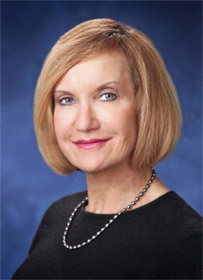 physical and mental well-being,” says Peggy Ledner-Spaulding, licensed clinical social worker and manager at Santa Rosa Memorial Hospital Outpatient Behavioral Health Services. “Chronic stress deceases people’s immune system, so they’re much more vulnerable to physical illness and all kinds of chronic pain, headaches, and GI distress. It’s all connected—the mind and the body. If we’re under daily chronic stress, that takes its toll on people’s physical and mental well- being. That in turn impacts and impairs people’s relationships and their work or school performance and their overall ability to function, including their sleep and their appetite.”
physical and mental well-being,” says Peggy Ledner-Spaulding, licensed clinical social worker and manager at Santa Rosa Memorial Hospital Outpatient Behavioral Health Services. “Chronic stress deceases people’s immune system, so they’re much more vulnerable to physical illness and all kinds of chronic pain, headaches, and GI distress. It’s all connected—the mind and the body. If we’re under daily chronic stress, that takes its toll on people’s physical and mental well- being. That in turn impacts and impairs people’s relationships and their work or school performance and their overall ability to function, including their sleep and their appetite.”
 physical and mental well-being,” says Peggy Ledner-Spaulding, licensed clinical social worker and manager at Santa Rosa Memorial Hospital Outpatient Behavioral Health Services. “Chronic stress deceases people’s immune system, so they’re much more vulnerable to physical illness and all kinds of chronic pain, headaches, and GI distress. It’s all connected—the mind and the body. If we’re under daily chronic stress, that takes its toll on people’s physical and mental well- being. That in turn impacts and impairs people’s relationships and their work or school performance and their overall ability to function, including their sleep and their appetite.”
physical and mental well-being,” says Peggy Ledner-Spaulding, licensed clinical social worker and manager at Santa Rosa Memorial Hospital Outpatient Behavioral Health Services. “Chronic stress deceases people’s immune system, so they’re much more vulnerable to physical illness and all kinds of chronic pain, headaches, and GI distress. It’s all connected—the mind and the body. If we’re under daily chronic stress, that takes its toll on people’s physical and mental well- being. That in turn impacts and impairs people’s relationships and their work or school performance and their overall ability to function, including their sleep and their appetite.”A growing movement to combat stress and ensure optimal mental health is mindfulness—the act of being in the present moment without worrying about the past or the future which you have no control over. By bringing your mind’s attention to the present, you relax your nerves, breathe easier, and calm your mind.
“What’s really helpful through the day, even if it’s just 20 seconds, is to just close your eyes and take some breaths and release stress and anxiety,” says Ledner-Spaulding. “We often don’t realize we’re carrying tension, in our work and in our school or doing our daily chores. Whatever we’re doing carries the potential for stress and anxiety. When you’re driving, you can spend about 15 seconds to a minute taking some nice cleansing breaths—taking in relaxation and breathing out anxiety and stress. We forget and as we get more stressed in the day we breath more shallow and we’re not taking care of our whole system.”
Practicing gratitude also helps keep positivity in your life. By refocusing your thoughts to positive details in your life, you can decrease your blood pressure, which translates into better health in all areas of your well-being.
“We want to balance the negative with the positive,” says Ledner-Spaulding. “There’s a lot to be grateful for, but sometimes we have to dig a little deeper. They can be the simplest things. It helps to balance our thoughts and our emotions, our moods, so we’re not just going down a negative spiral. That impacts our ability to sleep, our appetite, and our well-being.”
Maintaining balance
Another approach to ensuring optimal mental and physical health is to maintain a balanced lifestyle. When evaluating all the important factors of your life—work, family, recreation, physical health and exercise, social life, and spirituality, it’s important to recognize if your life is skewed towards one or more area. By setting small goals, making your well-being a priority in your life, and holding yourself accountable, you can eventually build changes into your life that will eventually alter your lifestyle for the better.
“It’s important to work on daily and weekly balance in our lives so that we’re not all work and no play or we’re not going home and spending too much time alone,” says Ledner-Spaulding. “All of this adds up to taking good care of ‘me,’ building a foundation inside of yourself with good mental, physical, emotional and spiritual well-being. From there, you can build relationships with others. But first you have to have that strong foundation of good self-care, or your relationships will struggle.”
Just as important as not making enough healthy choices, though, is going overboard and taking health to an extreme. Again, it comes down to a balance.
“When I talk to my patients about optimal health, it’s about balance,” says Dr. James Schieberl, family physician and chief of family medicine at Kaiser Permanente. “Folks can carry what I consider healthy habits too far. I’ve seen people over exercise and injure themselves. Though exercise is truly a pillar of being healthy, you can take it too far. I’ve seen people take their diets by cutting out fats or certain essential elements too far. I don’t believe in extremes. People need to balance their needs in terms of the key areas, which I consider sleep, exercise, and nutrition.”
The impact of stress
Keeping up with these pillars of health will also positively effect our level of stress, and more importantly, how we deal with it. Stress in our lives can lead to a variety of physical symptoms from headaches, to elevated blood pressure, to problems sleeping, which in turn can bring on diseases. According to an American Academy of Family Physicians Survey and research cited in the Harvard Business Review, 75 to 90 percent of all doctor’s office visits are for stress-related ailments and complaints, and with stress costing American industry more than $300 billion annually, the Occupational Safety and Health Administration (OSHA) declared stress a hazard of the workplace.
“Stress plays a huge impact on our health,” says Schieberl. “It’s because it’s insidious. It often creeps in from the background through normal life. Whether it be a difficult relationship or a difficult job or financial—there are so many sources of it that then play off on who we are and we accept it and we live with it. Then we adapt to it in ways that are very unhealthy—alcohol, marijuana, coffee and nicotine. You can see the habits that develop to try to compensate for it. If you can, find healthy ways to compensate for it—exercise, meditation, yoga—there are many healthy ways to relieve those things.”
Stress is a part of everybody’s life at some point or another, and we can’t simply avoid it. However, we can identify the factors in our lives that cause it, recognize how our body responds to it, and replace unhealthy practices with healthy ones.
An ounce of prevention
Having a baseline for where you are health-wise can help you understand your strengths, and where you can improve in terms of lifestyle habits, diet, and exercise. Educating yourself on healthy practices, and being realistic with what works best for you can help maintain the motivation to keep going and build onhealthy habits.
“First and foremost, it’s important to do preventative screenings and annual wellness checks, which are free,” says Teresa Scott, workforce health supervisor at St. Joseph Health. “Make sure to see your doctor annually so that they can assess and check your blood pressure and cholesterol, to make sure there aren’t dietary or lifestyle factors you can change or potential medication if you do need it.”
Benjamin Franklin’s maxim that “an ounce of prevention is worth a pound of cure” can certainly be applied to how we can maintain active, healthy lives, at any stage of life. Even if we cannot ourselves live in a “Blue Zone,” we can live like we do and practice the same healthful habits to thrive at any age.
Work Healthy, Live Healthy
St. Joseph Health began their “Work Healthy, Live Healthy” program eight years ago, to reach out to people in the workplace and help them achieve optimal health. The program seeks to improve the health and quality of life of all members of the communities they serve, and give employers a resource to improve employee health.
quality of life of all members of the communities they serve, and give employers a resource to improve employee health.
 quality of life of all members of the communities they serve, and give employers a resource to improve employee health.
quality of life of all members of the communities they serve, and give employers a resource to improve employee health. “Our mission at St. Joseph Health is to improve the health and quality of Life in the communities that we serve. We have a large community benefit department that works with low income and the non-insured to provide access to health services,” says Teresa Scott, workforce health supervisor at St. Joseph Health.
“What our department does is work with the insured population and at worksites. It’s such a great place to reach people and to help people lead a healthy life since we spend so many hours of our li
fe at work.”
By partnering with local businesses, employee health risks are addressed by providing health screenings and educational classes and workshops. Ultimately, this serves to control health care costs, reduce absenteeism, and increase productivity, besides keeping employees healthy and happy.
“We try to be your hub for wellness,” says Scott. “On top of providing on-site services like screenings, we provide consultations on how to develop a successful wellness program or how to implement that culture of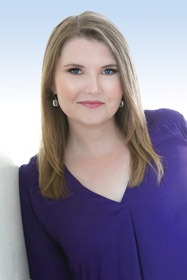 wellness.”
wellness.”
 wellness.”
wellness.”The Work Healthy, Live Healthy program provides many low cost or even free services to any size employer who provides an insurance plan that allows employees access to St. Joseph Health Hospitals and Medical Group. Some services are open to anyone, such as the free monthly e-newsletter in English and Spanish that provides articles on important health and wellness topics. Other services include on-site wellness presentations at employers’ workplaces; on-site screenings and flu shots; wellness program design; live healthy fitness and nutrition challenges; a workforce health symposium; and employee benefit plan navigation. In addition, the program facilitates annual iWALK, which encompasses challenges including work-site wellness toolkits, walking maps, and a calendar of local healthy events and challenges.Employers can also take advantage of corporate gym discounts at Synergy Health Clubs in Petaluma and Napa.
“It’s not just a cookie-cutter program,” says Scott. “We want to meet employers where they are and help them achieve success. Every organization is different, so when you have one set plan, that doesn’t necessarily work for everybody. We give employers tools and resources, and then help provide some of those services such as the screenings and the educational presentations on-site to try to help them develop and make a sustainable, not just wellness program, but culture of wellness at their workplace.”



